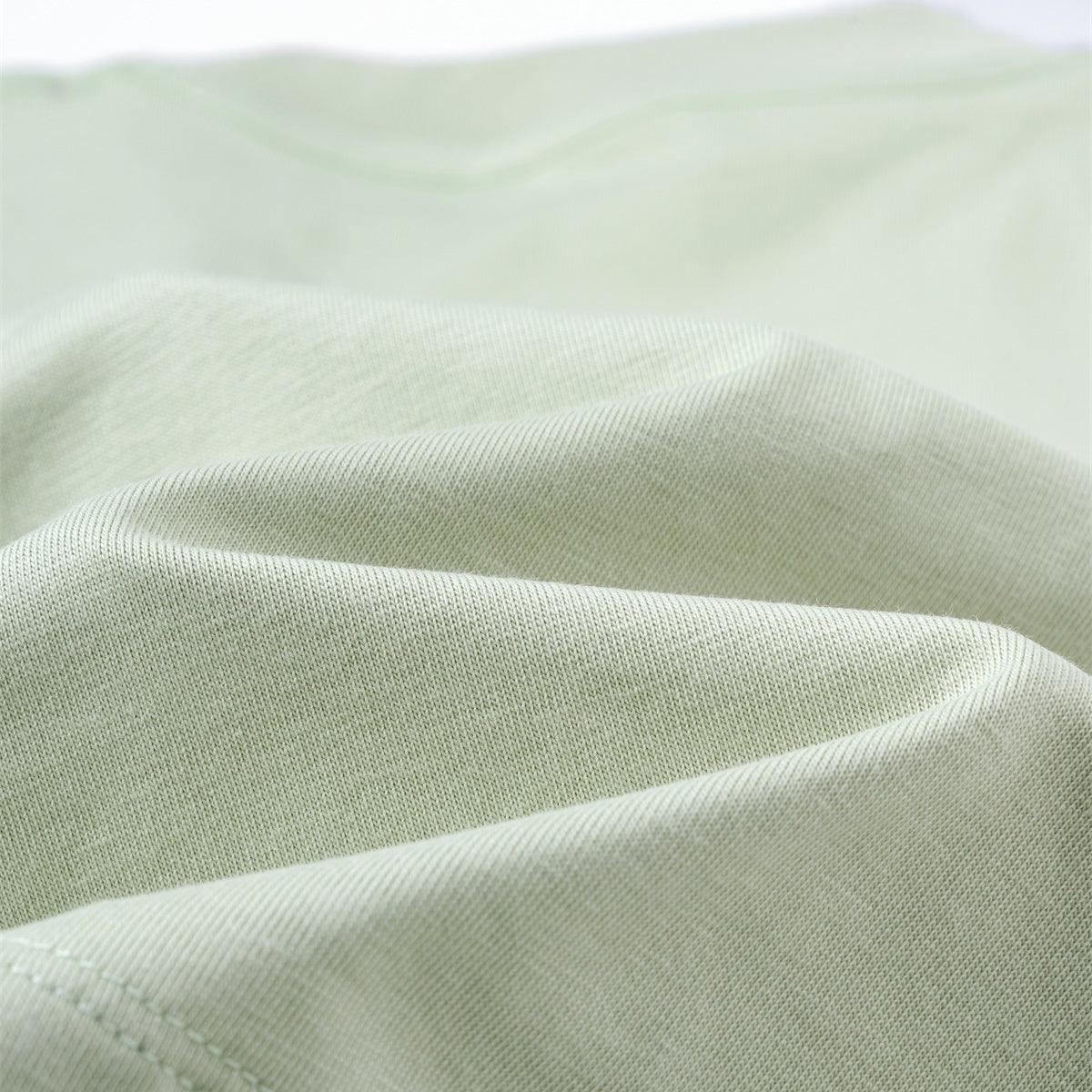When shopping for a T-shirt, you might have encountered terms like "fabric weight" or "fabric count," which can often seem confusing. However, understanding these terms is key to choosing a T-shirt that meets your comfort, durability, and style preferences. Let's dive into the world of T-shirt fabric counts and explore how they influence the quality and feel of your apparel.
What is Fabric Count?
The term "fabric count" refers to the fineness and density of the yarns used in the fabric. It's a crucial indicator of the fabric's quality, with higher counts signifying finer yarns, denser weave, and, consequently, a softer and more breathable material. Typically, fabric count is used to describe cotton materials, where a higher number indicates a higher quality garment.
The Differences Between Low, Medium, and High Count T-Shirts
Low Count T-Shirts (20 count and below): These T-shirts are made with coarser yarns, resulting in a thicker and heavier fabric. They offer moderate breathability and excellent durability, making them suitable for everyday casual wear or work attire. Due to their lower production costs, they are also more affordable.
Medium Count T-Shirts (21-30 count): With a moderate yarn size, these T-shirts strike a balance between thickness, softness, and breathability. They are versatile enough for a variety of occasions and represent a common choice for those looking for a good mix of comfort and affordability.
High Count T-Shirts (40 count and above): These are crafted with very fine yarns, leading to a fabric that is lightweight, soft, smooth, and highly breathable. They offer an exceptional wearing experience, especially in hot weather, and are typically priced higher due to their superior fabric qualities. High count T-shirts are ideal for high-quality casual or business casual wear.
Factors Influencing Comfort and Durability
Besides fabric count, the comfort and durability of a T-shirt are influenced by the yarn material (e.g., cotton, polyester, blends), the knitting technique, and the finishing processes applied to the fabric. When selecting a T-shirt, it's important to consider your needs and budget to find a product that offers the right balance of fabric count and material for your satisfaction.
Other Considerations
-
Breathability: High count T-shirts, with their finer yarns and denser weave, offer better breathability, making them suitable for warm weather. Low count T-shirts, on the other hand, may feel hotter and less comfortable in comparison.
-
Warmth: While high count T-shirts are breathable, their tight fiber structure can also trap air, offering some warmth. However, as T-shirts are generally worn in warmer seasons, this feature is not a primary concern for most buyers.
-
Durability: T-shirts with a higher fabric count are generally more resistant to wear and tear and have a longer lifespan, though they may require more careful laundering to maintain their quality.
-
Price: Higher production costs for high count T-shirts mean they are often more expensive than their lower count counterparts. Shoppers need to weigh their budget against their desire for comfort and quality when making a choice.
-
Appearance: The finer yarns of high count T-shirts allow for a smoother fabric surface, which can enhance the appearance of prints and dyes, leading to more vibrant and lasting colors and patterns.
Understanding the nuances of T-shirt fabric counts can significantly impact your shopping experience, ensuring you find a garment that not only looks great but feels comfortable and lasts longer. Whether you prioritize durability, comfort, or style, there's a T-shirt fabric count that's perfect for your needs.


